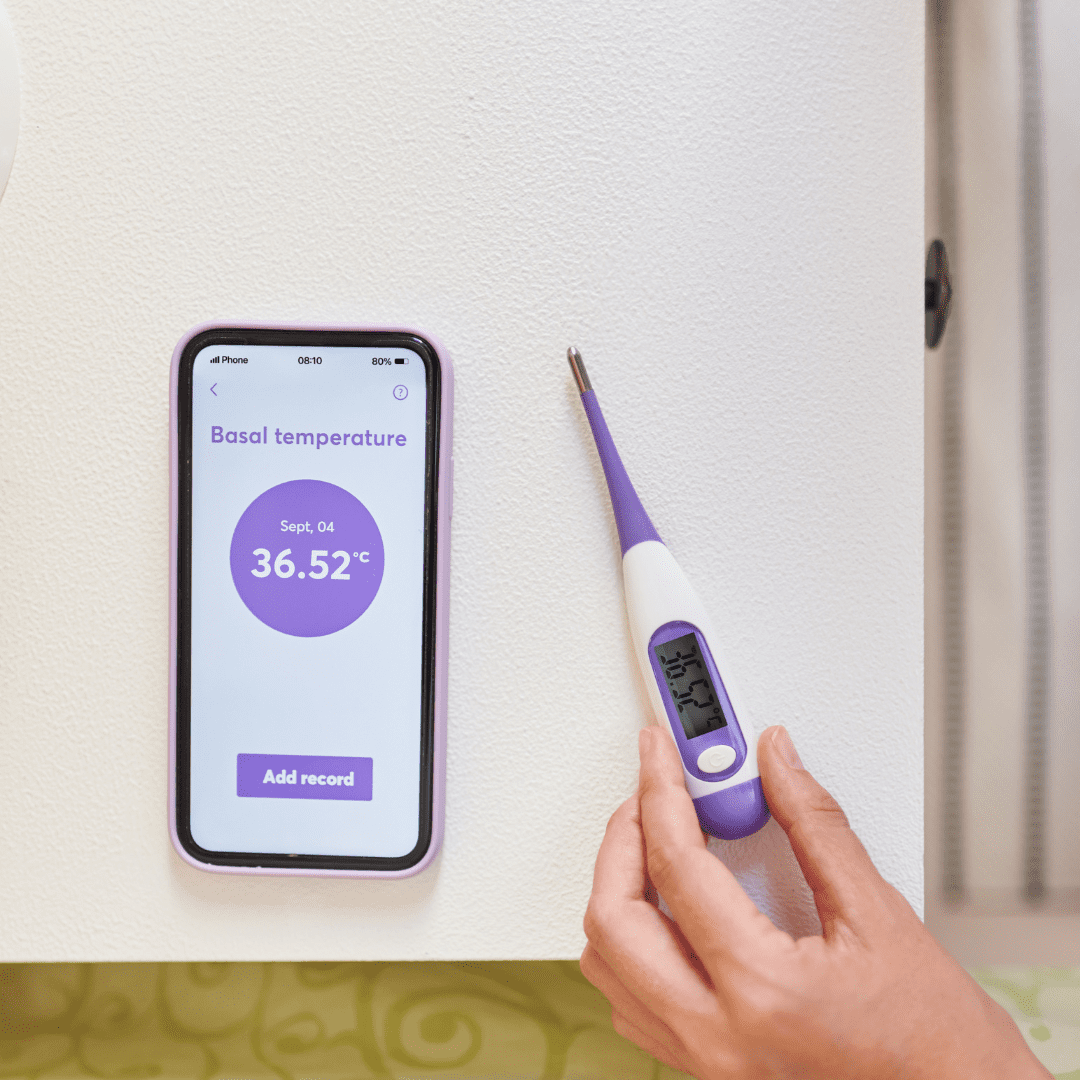If the idea of daily temperature tracking makes your head spin, you’re not alone.
Between remembering to take your temperature and trying to decode what all those numbers mean, basal body temperature (BBT) charting can feel overwhelming at first.
But here’s why it still matters:
Before you head down the fertility rabbit hole, it’s essential to rule out a timing issue.
So many women rely on period-tracking apps alone, only to discover months later that they’ve been missing their fertile window entirely.
And that’s where BBT tracking can really help.
Why BBT charting is a helpful fertility tool
BBT tracking is an affordable, low-tech way to better understand your menstrual cycle and ovulation patterns.
While ovulation predictor kits (OPKs) help forecast ovulation in advance, BBT confirms it after the fact by identifying the temperature shift that occurs once ovulation has happened.
Why is this valuable?
Because BBT charts can also reveal important clues about your cycle health, such as:
- Luteal phase length
- Progesterone levels
- Possible thyroid issues
- Whether or not ovulation is happening at all
Plus! OPKs aren’t always accurate.
If you have PCOS, you might get false positives for weeks, or test positive on the wrong day altogether. In those cases, BBT can be more reliable.
How to track BBT correctly
Getting accurate readings matters, so here’s how to do it:
What you’ll need:
A basal body thermometer that measures to two decimal points (e.g. 36.55°C). These are usually available at your local chemist.
Daily BBT tracking checklist:
- Take your temperature immediately upon waking (before getting out of bed)
- Use the thermometer under your tongue
- Aim to measure at the same time each day
- Ensure you’ve had at least 3 hours of uninterrupted sleep
- If you’re a shift worker, take your temperature after your longest sleep window
- Record your readings using an app like Fertility Friend or Natural Cycles, or simply use pen and paper
A quick note: Don’t look for “the dip”
There’s a popular myth that you’ll see a temperature dip right before ovulation but that’s not how BBT actually works.
Instead, ovulation is confirmed when you see three consecutive days of higher temperatures.
Your chart should have two distinct phases:
- Follicular phase (from your period to ovulation): lower temps
- Luteal phase (after ovulation): higher temps
When to skip temping for the day
You can skip taking your BBT if:
- You have a fever
- You had a poor night’s sleep
- You drank more than 2 alcoholic drinks the night before
These can all interfere with your readings.
My favourite tools for BBT charting
Here’s what I recommend for women who want to try BBT tracking:
🟡 Fertility Friend (Free App)
Great if you’re working with a practitioner (like me!) who can help interpret your chart. The layout is clean, and it gives clear patterning over time.
🟣 Natural Cycles
Perfect for solo use.
This app does the interpreting for you and is science-backed, easy to use, and affordable, only $8.33 AUD/month including a thermometer.
It can also be used as a non-hormonal contraceptive when you’re not TTC.
🟠 Tempdrop
If you struggle with routine or shift work, this wearable device might be ideal.
It tracks your temperature while you sleep (no alarm needed) and syncs with its own app. It’s more expensive (~$249 AUD), but super convenient.
I don’t recommend more expensive options that come with hidden costs, confusing instructions, or limited cycle tracking features.
But what if you still hate daily tracking?
No problem! There are other ways to identify ovulation:
- Ovulation predictor kits (OPKs)
- Cervical mucus tracking
- Progesterone blood test (often called a Day 21 test, done 7 days after suspected ovulation)
BBT isn’t for everyone. The last thing I want is for your fertility journey to feel stressful or rigid.
BBT tracking can be a simple, empowering way to understand your body and improve your timing when trying to conceive.
Even if you only do it for a couple of months, it can provide insights that help you make better decisions, spot hormonal patterns, and rule out issues you didn’t know were affecting your fertility.
You don’t need fancy gadgets or perfect data.
Just a little curiosity, consistency, and support.

+ show Comments
- Hide Comments
add a comment